If you’re a gardening enthusiast, you know how important it is to have a consistent and powerful water supply for your plants.
A garden hose with low water pressure can be frustrating, leading to inadequate irrigation and unsatisfactory plant growth.
Fortunately, there are several steps you can take to increase your garden hose water pressure and ensure your plants receive the care they deserve.
In this article, we’ll explore effective methods to boost your water pressure, from simple maintenance to advanced solutions.
Understanding the Importance of Water Pressure
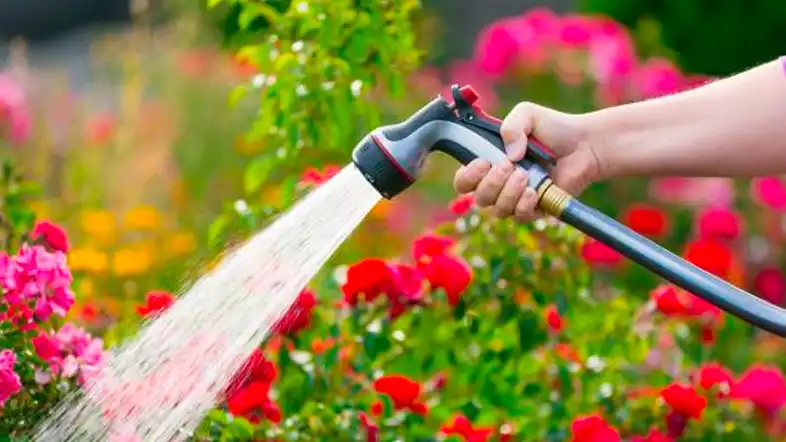
Water pressure is a fundamental aspect of gardening that often goes unnoticed until problems arise. Imagine your garden hose as the lifeline that nourishes your plants, delivering the hydration they need to thrive. The water pressure within this hose determines the force at which water is expelled, directly impacting the efficiency of irrigation.
Let’s delve deeper into why water pressure matters and how it affects your gardening endeavors.
Efficient Water Distribution:
Adequate water pressure ensures that water is distributed evenly across your garden. When water flows with enough force, it can reach plants in all corners of your garden, ensuring they receive the hydration they require for healthy growth. Without sufficient pressure, certain plants may receive inadequate water, leading to wilting and stunted development.
Timely Watering:
High water pressure allows you to water your garden quickly and efficiently. This is especially crucial during hot weather, when plants need hydration to combat heat stress. With proper pressure, you can cover larger areas in less time, ensuring that your plants receive water promptly.
Effective Sprinkler and Nozzle Performance:
Garden hoses are often equipped with various attachments such as sprinklers and nozzles. These attachments rely on appropriate water pressure to function optimally. For instance, a sprinkler requires enough pressure to disperse water evenly over a designated area. Without the right pressure, the distribution might be uneven, leaving some spots overwatered and others parched.
Soil Saturation:
Water pressure plays a vital role in achieving the right soil saturation level. If water pressure is too low, the soil might not absorb enough water, leading to shallow root growth and vulnerability to drought conditions. On the other hand, proper pressure ensures that water reaches deeper layers of soil, promoting healthier root systems.
Preventing Clogs and Blockages:
Insufficient water pressure can contribute to clogs and blockages within the hose itself. Sediment, debris, or mineral buildup can accumulate over time, impeding the flow of water. This not only reduces water pressure but also increases the risk of damage to your hose.
Economic Water Usage:
While it might seem counterintuitive, higher water pressure can actually lead to more efficient water usage. When water pressure is low, you might compensate by running the hose for longer periods to ensure thorough watering. This can result in wastage of water. Adequate pressure allows you to water efficiently, using less water for better results.
In essence, water pressure is the driving force behind effective garden irrigation. It ensures that your gardening efforts translate into vibrant, flourishing plants. By understanding and optimizing water pressure, you can create an environment where your plants receive the care they need to thrive. Whether you’re tending to a small backyard garden or a sprawling landscape, paying attention to water pressure can make a remarkable difference in the health and beauty of your plants.
Checking for Garden Hose Blockages and Leaks
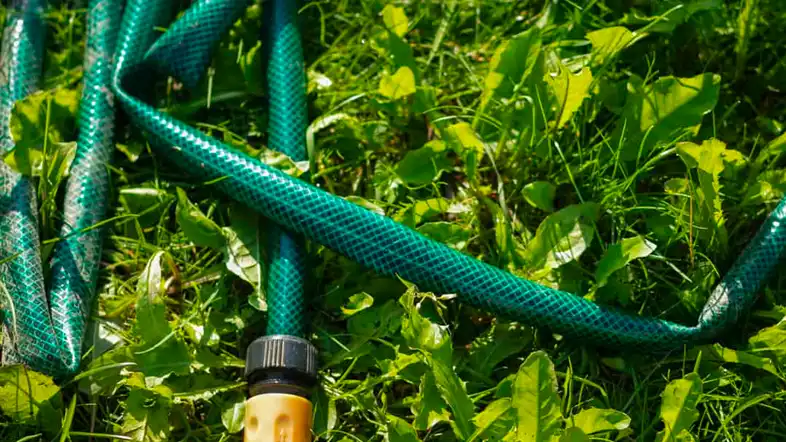
Checking for blockages and leaks in your garden hose is a crucial step in maintaining optimal water pressure for your garden. A blocked or leaky hose can significantly hinder the flow of water, leading to inadequate irrigation and potential damage to your plants. Here’s a more detailed explanation of how to check for blockages and leaks:
Blockages: Blockages in your garden hose can occur due to various reasons, such as debris, dirt, or mineral buildup. When a blockage occurs, water flow becomes restricted, resulting in reduced water pressure. To check for blockages:
- Inspect the Hose: Carefully examine the entire length of the hose. Look for any visible signs of kinks, bends, or flattened areas that might indicate a blockage.
- Remove Nozzle or Sprayer: If your hose is connected to a nozzle or sprayer, detach it to access the hose’s opening.
- Run Water Through: Turn on the water supply and let water flow through the hose. Observe the water flow. If the flow is weak or irregular, there may be a blockage.
- Check for Debris: If you suspect a blockage, use a straightened wire hanger or a thin, flexible rod to gently probe the hose’s opening. Be cautious not to damage the hose while doing this.
- Flush Out Debris: If you encounter resistance while probing, there might be a blockage. Gently move the wire hanger or rod back and forth to dislodge the debris. Flush the hose with water to clear the blockage.
Leaks: Leaks in your garden hose can occur due to cracks, holes, or damaged connections. Even a small leak can significantly reduce water pressure. To check for leaks:
- Inspect the Hose Exterior: Examine the entire length of the hose for visible cracks, holes, or splits. Pay close attention to areas near connectors and joints.
- Check Connectors: Inspect the connectors at both ends of the hose. Look for signs of water dripping or pooling around the connectors.
- Run Water Through: Turn on the water supply and observe the hose for any signs of water leakage. If you notice water spraying from a certain area, there might be a leak.
- Repairing Leaks: If you find a leak, you can use hose repair kits available at hardware stores. These kits typically include patches or clamps that can be used to seal small leaks.
- Replace Damaged Sections: If the hose has extensive damage or multiple leaks, it might be more practical to replace the damaged sections with a new hose.
Regularly checking for blockages and leaks is essential to ensure that your garden hose functions optimally. By addressing these issues promptly, you’ll maintain consistent water pressure, promoting healthy plant growth and vibrant gardens.
Cleaning and Maintaining Garden Hose
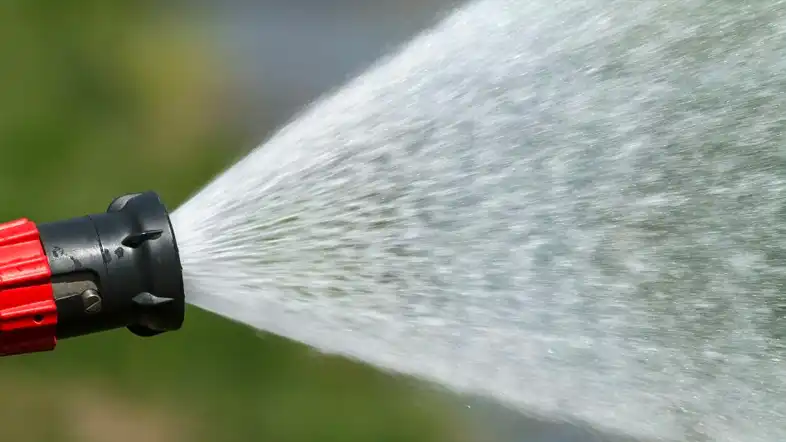
Cleaning and maintaining your garden hose is a fundamental step in ensuring that it functions optimally and delivers the water pressure your plants need to thrive. Over time, hoses can accumulate dirt, debris, and mineral deposits that can hinder water flow and reduce pressure. Here’s a detailed explanation of how to clean and maintain your garden hose effectively:
1. Regular Cleaning: Regularly cleaning your garden hose is essential to prevent the buildup of dirt and debris. Start by disconnecting the hose from the water source and draining any remaining water. Lay the hose straight on the ground to make cleaning easier.
2. Removing Dirt and Debris: Use a soft brush or a cloth to remove dirt, mud, and other debris from the exterior of the hose. Gently scrub the hose’s surface to dislodge any particles that might be stuck.
3. Flushing the Interior: To clean the inside of the hose, connect one end to a water source and hold the other end downward. Turn on the water to allow a strong stream to flow through the hose, effectively flushing out any remaining dirt and debris. Rotate the hose while flushing to ensure thorough cleaning.
4. Addressing Mineral Buildup: Mineral deposits can accumulate inside the hose, causing blockages and reducing water flow. To address this issue, create a mixture of equal parts white vinegar and water. Attach one end of the hose to the water source and immerse the other end in the vinegar solution. Let it soak for a few hours or overnight to dissolve mineral buildup. After soaking, flush the hose with clean water.
5. Checking for Leaks: While cleaning, inspect the hose for any signs of leaks, cracks, or weak spots. If you notice any damage, consider repairing or replacing the hose to prevent further issues with water pressure.
6. Storing Properly: After cleaning, make sure the hose is completely dry before storing it. Coiling the hose neatly and using a hose hanger or reel can prevent kinks and prolong the hose’s lifespan.
7. Seasonal Maintenance: Perform thorough maintenance before and after the gardening season. Before winter arrives, drain the hose completely and store it indoors to prevent freezing. When spring arrives, repeat the cleaning process to remove any dirt that may have accumulated during storage.
By regularly cleaning and maintaining your garden hose, you ensure that it remains free from obstructions and mineral buildup. This will not only help maintain water pressure but also extend the lifespan of your hose, allowing you to enjoy a thriving garden all year round. Remember, a well-maintained hose means healthier plants and a more enjoyable gardening experience.
Using a High-Pressure Nozzle
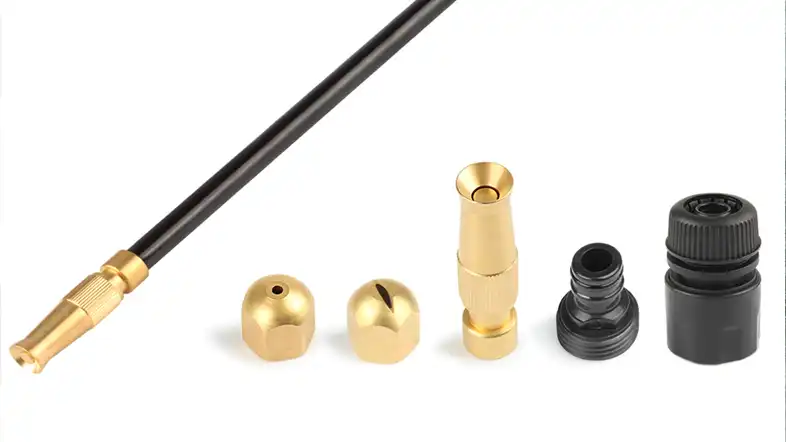
Benefits of Using a High-Pressure Nozzle
- Improved Water Reach: The primary advantage of using a high-pressure nozzle is the increased water reach. With the concentrated stream of water, you can effectively water plants that are farther away from the hose, ensuring even coverage throughout your garden.
- Better Soil Penetration: The forceful stream created by the nozzle aids in penetrating the soil. This is particularly beneficial for compacted soil or areas with dense vegetation, as the water can reach the roots more effectively.
- Time Efficiency: With the higher pressure provided by the nozzle, you can water your garden more efficiently. The increased coverage area means you spend less time moving the hose around to cover every plant.
- Cleaning Power: High-pressure nozzles aren’t only useful for watering plants. They’re also great for cleaning tasks, such as removing dirt from walkways, driveways, and outdoor furniture. The powerful stream can dislodge debris with ease.
- Water Conservation: The precise control offered by the nozzle allows you to direct water exactly where it’s needed. This minimizes overspray and reduces water wastage, making your garden watering efforts more eco-friendly.
- Versatility: Most high-pressure nozzles come with adjustable settings, allowing you to switch between different spray patterns. This versatility makes the nozzle suitable for a wide range of gardening and cleaning tasks.
While a high-pressure nozzle is a valuable tool, it’s important to use it responsibly. The increased pressure can potentially damage delicate plants if the water force is too intense. To avoid this, adjust the nozzle’s settings based on the type of plant you’re watering. Additionally, be mindful of any potential splashing that could displace soil around your plants’ roots.
A high-pressure nozzle can be a game-changer for maintaining a thriving garden. By converting the flow of water into a concentrated stream, this nozzle enhances water pressure, reach, and penetration. Whether you’re nurturing your plants or tackling outdoor cleaning tasks, a high-pressure nozzle is a versatile tool that can contribute to the overall health and beauty of your garden.
Upgrading Your Garden Hose with Large Diameter
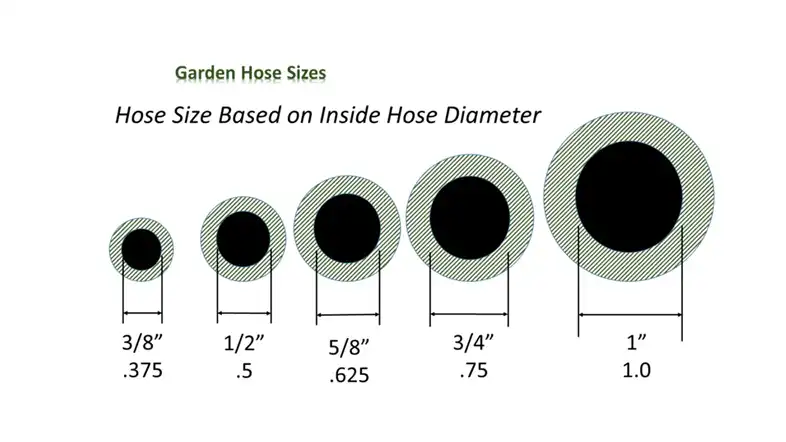
Upgrading to a hose with a larger diameter is a practical way to enhance water pressure in your garden. Let’s break down how this works:
When water flows through a hose, it encounters resistance from the inner surface of the hose. This resistance is influenced by the size of the hose’s diameter. A larger diameter hose provides more space for water to flow, resulting in reduced resistance. This reduced resistance allows a greater volume of water to move through the hose without encountering as much friction.
Think of it like a traffic lane on a road. A wider lane can accommodate more vehicles, allowing them to move smoothly without congestion. Similarly, a hose with a larger diameter offers less resistance to water flow, enabling a higher volume of water to pass through without experiencing a drop in pressure.
Imagine you’re using a regular-sized hose to water your garden. The water has to squeeze through a narrower passage, causing some pressure loss due to friction. In contrast, a hose with a larger diameter provides a wider path for the water to travel, minimizing the pressure drop caused by friction.
By upgrading to a hose with a larger diameter, you’re essentially providing a “freeway” for water to move through. This increased flow capacity results in improved water pressure, ensuring that your plants receive a consistent and forceful stream of water, leading to better irrigation and healthier growth.
Installing a Water Pressure Booster Pump
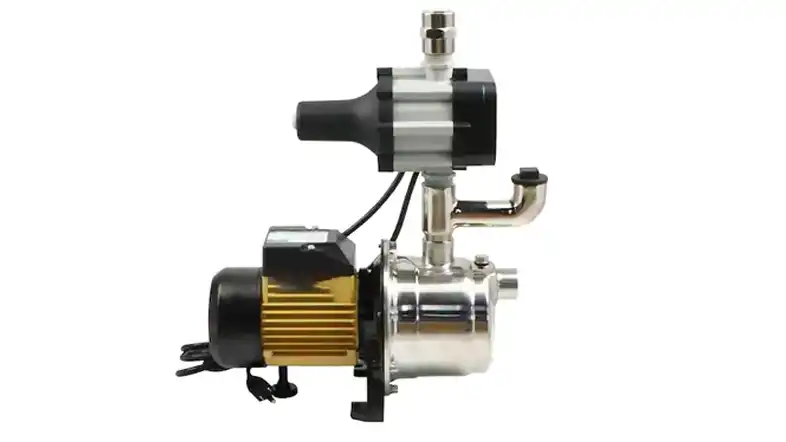
A Water Pressure Booster Pump operates by taking water from your existing water supply and then using an electric motor to increase its pressure before it reaches your garden hose. This boost in pressure is achieved by using impellers or other mechanisms that effectively compress and force the water through a narrower passage, thereby elevating its pressure.
Exploring Water Pressure Regulators
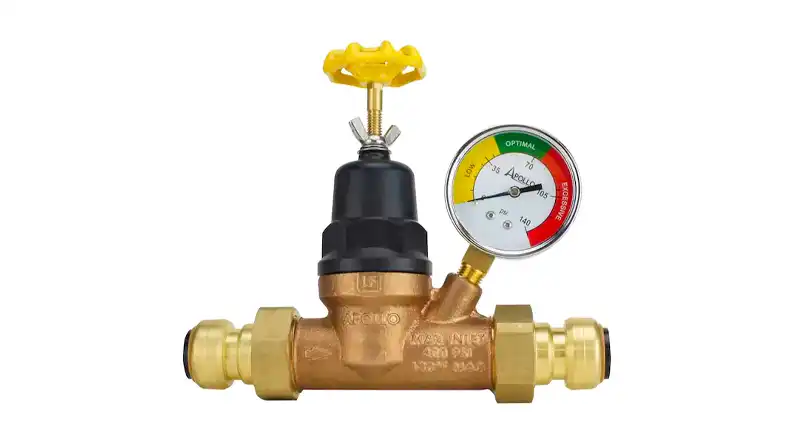
Exploring water pressure regulators is an essential aspect of optimizing your garden hose water pressure. These devices play a crucial role in maintaining a consistent and controlled water flow, ensuring that your plants receive the right amount of water without the risk of damaging the hose or other components.
A water pressure regulator, also known as a pressure-reducing valve, is a mechanical device designed to regulate and reduce the incoming water pressure from your water source. This is particularly useful if your main water supply has high pressure that could potentially damage your hose, connectors, or even your plants.
Here’s how a water pressure regulator works:
- Pressure Control: Water pressure regulators are equipped with an adjustable valve mechanism that allows you to set the desired pressure level. As water flows through the regulator, it encounters this valve, which restricts the flow to achieve the desired pressure.
- Consistent Flow: By reducing the pressure to a manageable level, the regulator ensures a consistent and stable water flow through your garden hose. This prevents sudden bursts of high pressure that could damage the hose or create uneven watering patterns.
- Protection: Water pressure that is too high can cause stress on your hose, connectors, and irrigation equipment. It can also lead to water wastage. A pressure regulator protects your equipment by maintaining safe and suitable pressure levels.
- Preventing Leaks: Excessive pressure can cause hose connectors to leak or even detach from the hose altogether. By using a pressure regulator, you can reduce the likelihood of leaks and ensure that your hose connections remain secure.
- Optimal Plant Care: Consistent water pressure ensures that all areas of your garden receive the same amount of water, promoting even growth and healthy plants. Uneven pressure could result in over-watering some areas and under-watering others.
When exploring water pressure regulators, consider these points:
- Compatibility: Choose a regulator that is compatible with your hose and water source. Make sure it’s suitable for outdoor use and can handle the demands of garden irrigation.
- Installation: Water pressure regulators are relatively easy to install. They typically connect between your water source and the hose inlet. Some models may require basic plumbing knowledge, while others are more user-friendly.
- Adjustability: Opt for a regulator with adjustable settings. This allows you to fine-tune the water pressure according to the specific needs of your garden.
- Maintenance: Regularly inspect and clean the regulator to ensure it functions optimally. A clogged or dirty regulator might not work effectively.
Incorporating a water pressure regulator into your garden hose setup can provide peace of mind, knowing that your plants are receiving a consistent and appropriate water supply. It’s a valuable tool for maintaining the health of your garden and preserving the longevity of your hose and irrigation equipment.
Maximizing Water Flow Efficiency
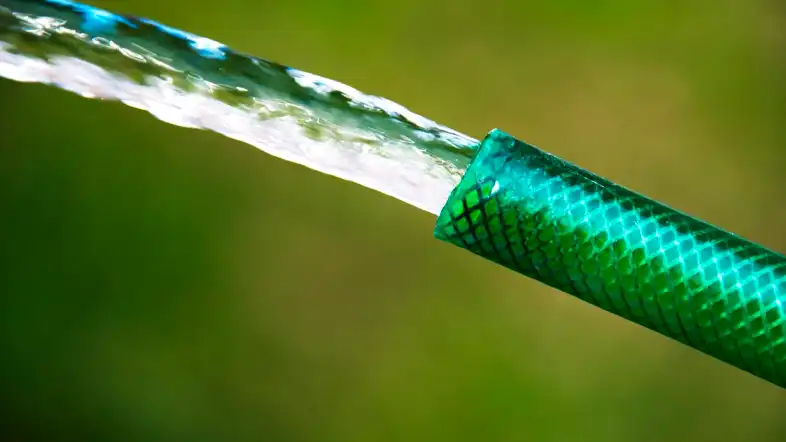
Maximizing water flow efficiency is a crucial aspect of improving garden hose water pressure. It involves ensuring that water can flow freely and smoothly through the hose, without any obstructions or restrictions that might hinder its movement. By optimizing water flow efficiency, you can effectively increase the pressure and reach of the water, providing your plants with the irrigation they need for healthy growth. Here’s a more detailed explanation of how to maximize water flow efficiency:
1. Remove Kinks and Twists: One of the simplest ways to enhance water flow is by ensuring that your garden hose is free from kinks, twists, and bends. These deformities in the hose can disrupt the flow of water, leading to decreased pressure at the other end. Carefully straighten out the hose and avoid sharp bends to maintain a smooth path for water to travel.
2. Check for Blockages: Inspect the hose for any potential blockages or debris that might be obstructing the water flow. Sometimes, dirt, leaves, or small particles can accumulate inside the hose and restrict the passage of water. If you find any blockages, gently remove them to restore optimal flow.
3. Use the Right Hose Length: Using a hose that’s excessively long can lead to pressure loss due to friction and resistance as water travels through it. Choose a hose length that’s appropriate for the size of your garden to maintain efficient water flow. A shorter hose can result in better pressure over longer distances.
4. Maintain Adequate Water Pressure at Source: Ensure that the water source, such as the faucet or spigot, is providing adequate water pressure. If the source pressure is low, it will affect the pressure throughout the hose. Check for any leaks or issues with the source connection that might be causing pressure drops.
5. Avoid Hose Tangles: Prevent your garden hose from tangling by storing it properly after use. Tangles not only make it difficult to unravel the hose but can also restrict water flow if left unaddressed.
6. Choose the Right Nozzle: The nozzle you use at the end of your hose can impact water flow. Opt for a high-quality nozzle that is designed to provide a powerful and focused stream of water. A nozzle with adjustable settings can also help you customize the water pressure according to your needs.
7. Regular Maintenance: Like any other tool, your garden hose requires regular maintenance. Inspect it for wear and tear, and replace any damaged parts that might be affecting water flow. Additionally, clean the nozzle and hose connectors to remove any mineral buildup that can hinder water passage.
By paying attention to these factors and taking proactive measures to ensure smooth water flow, you can significantly enhance the efficiency of your garden hose. This, in turn, will lead to improved water pressure, enabling you to care for your plants effectively and maintain a thriving garden.
Utilizing Gravity for Pressure
One of the ingenious methods to enhance your garden hose water pressure is by utilizing the power of gravity itself. This technique takes advantage of the basic principle that water flows from higher to lower levels, exerting pressure as it descends. By positioning your water source at a higher elevation than your garden, you can create an additional gravitational force that aids in increasing the water pressure delivered through the hose.
Here’s how it works:
- Elevation Difference: The key to this method is to have a noticeable height difference between the water source and the garden area you intend to irrigate. The greater the elevation difference, the more significant the pressure increase will be.
- Water Velocity: As water flows downhill due to gravity, it gains momentum and velocity. This enhanced velocity translates into higher pressure when the water reaches the garden hose.
- Simple Setup: The setup for utilizing gravity for pressure is relatively simple. You need to position your water container or source at a higher point, such as a raised platform or a hill. The hose then connects from this elevated source to your garden area.
- No Extra Equipment: The beauty of this method is its simplicity. Unlike some other pressure-boosting techniques that require additional equipment, utilizing gravity doesn’t necessitate any pumps or regulators. It’s a natural and straightforward approach.
- Consistent Pressure: Once you’ve set up the system, the pressure generated by gravity remains relatively stable, providing a consistent water flow to your garden.
- Compatibility: This technique is compatible with various types of hoses and water sources. Whether you’re using a traditional garden hose, a soaker hose, or a drip irrigation system, gravity-assisted pressure can work effectively.
- Water Conservation: Using gravity to increase pressure can also contribute to water conservation. The enhanced pressure allows you to cover a larger area with the same amount of water, reducing wastage.
It’s important to note that the effectiveness of this method depends on the height difference between the water source and the garden area. The greater the elevation change, the more significant the pressure increase. However, keep in mind that excessively steep slopes could lead to excessive pressure, potentially damaging your plants or the hose itself. It’s advisable to find a balance that suits your garden’s needs without creating excessive force.
Ensuring Proper Garden Hose Length
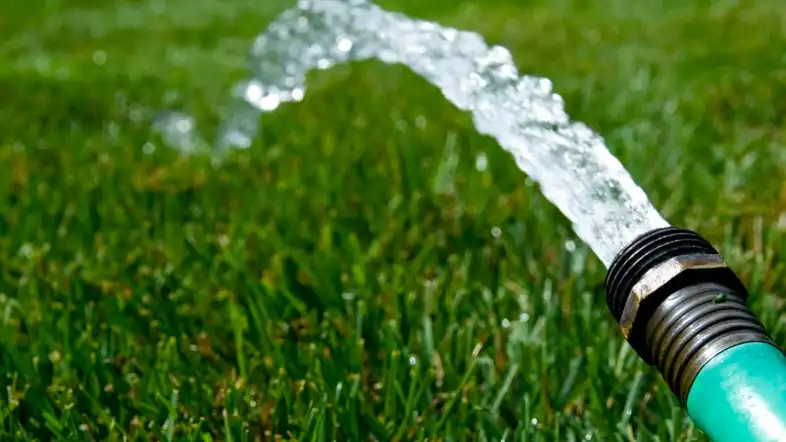
The length of your garden hose might not be something you think about often, but it can actually have a significant impact on the water pressure in your garden. Using a hose that is too long or too short can lead to pressure loss and inefficient water distribution. In this section, we’ll delve deeper into the importance of ensuring the proper length for your garden hose and how it can affect water pressure.
Optimal Length for Water Pressure
Selecting the right hose length is essential for maintaining adequate water pressure throughout your garden. If your hose is too long, the water has to travel a greater distance, which can result in pressure drop. On the other hand, if your hose is too short, you might not be able to reach all the areas of your garden, leading to uneven irrigation and plant stress.
Pressure Loss Due to Hose Length
When water travels through a hose, it encounters friction along the inner walls of the hose. This friction can lead to pressure loss over longer distances. If your hose is excessively long, the pressure drop can be noticeable, and your plants might not receive the proper amount of water they need.
Choosing the Right Length
To determine the appropriate hose length for your garden, consider the size and layout of your outdoor space. Measure the distance from the water source to the farthest point you need to reach. It’s a good idea to choose a hose that is just slightly longer than this measurement to allow for some flexibility.
Avoiding Excess Length
While it might be tempting to opt for an extremely long hose to cover every corner of your garden, it’s important to remember that longer hoses are more prone to pressure loss. Instead of investing in a single extra-long hose, consider using a hose reel or hose connectors to join two shorter hoses when needed. This way, you can maintain water pressure without sacrificing coverage.
Preventing Kinks and Tangles
A longer hose also increases the likelihood of kinks and tangles, which can disrupt water flow and reduce pressure. Make sure to properly lay out and secure the hose to prevent these issues. Using hose guides and holders can help keep the hose organized and tangle-free.
Regular Inspection
Regardless of the hose length you choose, it’s important to regularly inspect it for any damage, leaks, or kinks. Even a minor issue can impact water pressure. Additionally, store your hose properly when not in use to prevent kinks and extend its lifespan.
Conclusion
With these tips and tricks, you can ensure that your garden receives the water it needs to flourish. By maintaining, upgrading, and optimizing your garden hose and water source, you’ll have lush and vibrant plants that thrive throughout the seasons.

